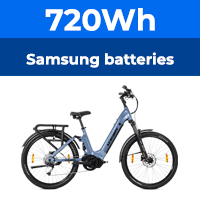Hi
Can anyone please tell me how the pedal sensor works on the bikes, is it just a simple
switch, ie would just joining the wires complete the circuit or is it a signal that is send back to the controller when activated.
Thanks
Can anyone please tell me how the pedal sensor works on the bikes, is it just a simple
switch, ie would just joining the wires complete the circuit or is it a signal that is send back to the controller when activated.
Thanks







